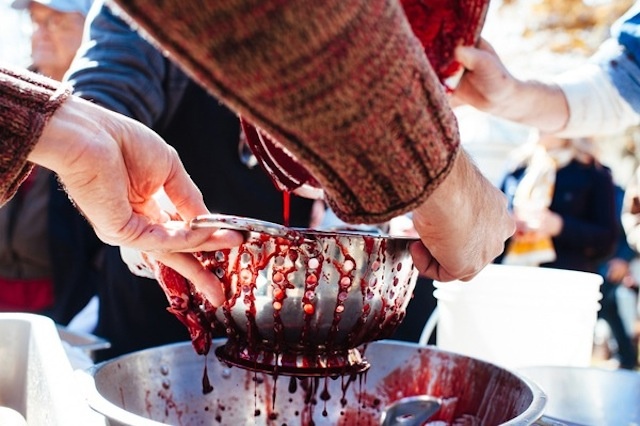
Advertisement



Toby: Here in south Louisiana, boudin consists mainly of pork, liver, and rice. Traditionally, it was discarded meat trimmings stuffed into entrails with seasoning and long-grain rice. There’s also emulsified onions, bell peppers, and celery, along with fresh parsley and green onion mixed in. It differs from region to region in Louisiana. Some places are a little spicier, and some have bigger chunks of meat. The prairie normally has more liver, while places like Higginbotham and Link prefer more rice and coarser black pepper. People like the boudin they grew up with. There’s definitely a nostalgia for it. I think boudin and cracklins’ are what gave rise to the many specialty meat markets around Acadiana, where most of the boudin is produced today.
Advertisement

First off, you’re not going to get blood boudin from a normal specialty meats place. You’re going to get it from a boucherie or a slaughterhouse, and most slaughterhouses don’t even fuck with it at all. The blood is extracted right after the gunshot. You’re going to catch the blood, add salt to keep it from coagulating, and put it off to the side. The blood is reintroduced to the process after the meat is cooked and ground up with emulsified vegetables and seasonings. Once you get it seasoned to the point where you like it, that’s when you add the blood to the meat mixture. It’s very easy to over-salt blood boudin. Someone has to be brave enough at this point to taste the raw blood and cooked meat to figure out whether it needs more salt. The rice can be added before or after the blood is added, but either is acceptable. The important thing to remember is the blood and casing are still raw until you stuff it in the intestine casing and boil it. So if you were to freeze it, you’d want to freeze it raw and boil it when you’re ready to eat it.

Absolutely. I think that people who don’t are completely missing out.

Yes, we always do. I don’t feel good about letting the blood fall onto the ground. We’re trying to make the point that there’s no wasted part of the animal. The only time we didn’t make it was when the blood congealed into a big soufflé. There wasn’t enough salt in it.
Advertisement

It tastes like iron. It’s really, really, really rich, like pâté.

It’s violent at first. You can feel all those muscles pumping and struggling. That struggle diminishes with every last heartbeat, and finally the animal is gone. We pump an artery that runs along the shoulder and into the neck to get out the last bit of blood. It’s a very natural and easing feeling. I think that most people who are freaked out about it would realize that if they actually got in there and did it; it almost feels like going to sleep. There’s an innate thing about it. It’s like having sex or anything that we’re born to do. We’re born to be carnivores. I think this is something that everyone knows how to do, but we’re so removed from our natural state as a species. Now people have a knee-jerk reaction to the process. We’ve devolved. We’ve been cut out of our food chain by ourselves. We don’t understand the natural order of things. This should not be something that phases anyone. It should be a completely normal daily event.

Not many. There are a few old guys in St. Martinville and Eunice who still do it, and a group of young guys in Lafayette, but that’s about it. It’s very few that still do it, and I can’t understand why. I’m 39 years old, and when my dad was a kid, his family didn’t go to the store. They butchered their own protein. I can’t believe we’ve given up control over our own food chain in such a short period of time. Now I go to the slaughterhouse and buy my pig. When I was a kid, we had our own pigs. You went to the sale barn and picked out a 100-pound pig and raised it until it was 300 pounds.
Advertisement



You know it’s going to be a different color, but it comes out as this beautiful violet purple hue. When you boil it, it turns black. There’s nothing prettier. It’s a deep robust flavor. If white boudin were a merlot, then blood boudin would definitely be a cabernet… or maybe the white boudin is a Boone’s Farm Strawberry Hill, and the blood boudin is like a fucking Night Train Express or Mad Dog 20/20.Mad Dog 20/20… Got it! Thanks for talking to me, Toby!Denny Culbert is a Lafayette, Louisiana–based food, documentary, and portrait photographer who’s not afraid to get a little blood on his lens. You can see more of his work at dennyculbert.com.